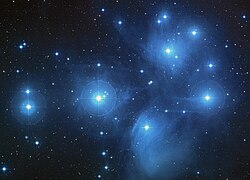The World of Aldebaran
Planet: Aldebaran: Alcyone System
Oxygen Atmosphere
Terrestrial planet
Mild to moderate temperate
Weathering mild to moderate
Habitability 95.22%
Multi-cultured life forms
Technology level abnormal!!!
Medieval/technocratic
Total planetary population 2,586,126

The History of Aldebaran
Opening Statement:
“In this book I used TSR’s Forgotten Realms & Dragon Lance as a concept for setting and terminology.”
“This particular world as I have Named Aldebaran is an actual planet in the constellation of Taurus.
However, this is my own version and reality of Dungeons & Dragons.
[Originally designed by E. Gary Gygax and Dave Arneson, and first published in 1974 by the Gygax-owned company Tactical Studies Rules, Inc.
(TSR). The game is currently published by Wizards of the Coast, a division of Hasbro.]
I would also like to take note of my inspiration from Raymond E. Feist and his Rift War saga.
I would also like to take note of inspiration from the late Robert Jordan and the Wheel of Time series.
With out authors like you I don’t think I would be writing this today.
Etymology and Cultural Significance:
*Aldebaran is the brightest star in the constellation Taurus and one of the brightest stars in the nighttime sky.
It has the Bayer designation Alpha Tauri. Because of its location in the head of Taurus, it has historically been called the Bull's Eye.
Aldebaran has the appearance of being the brightest member of the more scattered Hyades cluster, which is the closest star cluster to Earth.
However, it is merely located in the line of sight between the Earth and the Hyades, and is actually an independent star.
It is known as 畢宿五 (Bìxiùwŭ, the Fifth Star of the Net) in Chinese.
Aldebaran is identified as the lunar mansion Rohini in Hindu astronomy and as one of the twenty-seven daughters of Daksha and the wife of the god Chandra.
In Persia it was known as Satvis and Kugard.[4]
The Romans called it Palilicium.* source: Wikipedia 2008
**Although Aldebaran is classified as a K5 III star, which means it is orangish, large, and has moved off of the main sequence after exhausting the hydrogen fuel in its core.
I chose to use it for several significant reasons of my own. Which in turn boils down to fate alone! T
here is of course a story behind that too but perhaps it’s something you can look forward to reading in my next book. ***
Pleiades Star Cluster in the Taurus Galaxy

